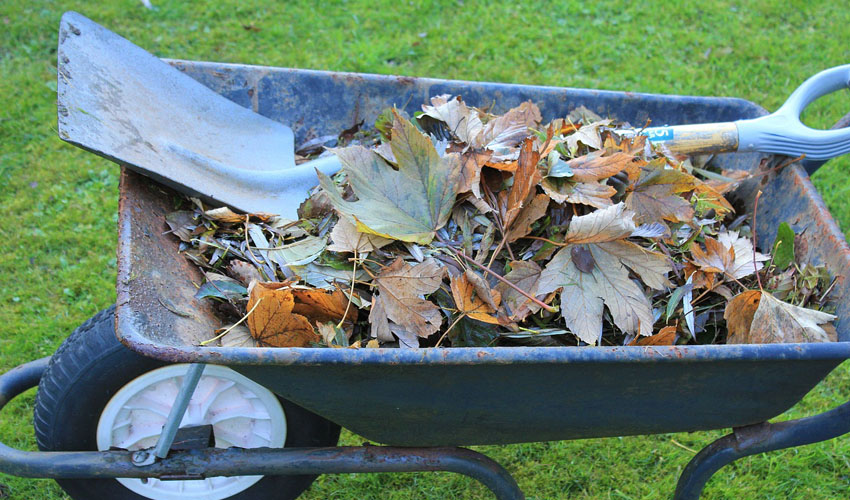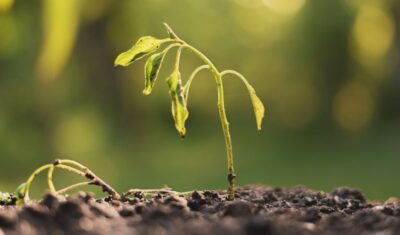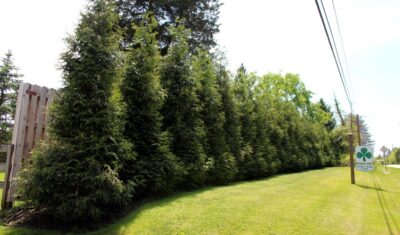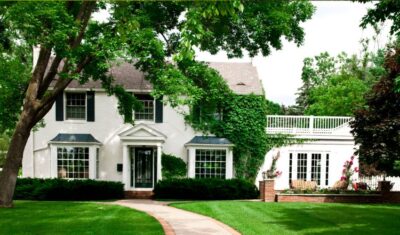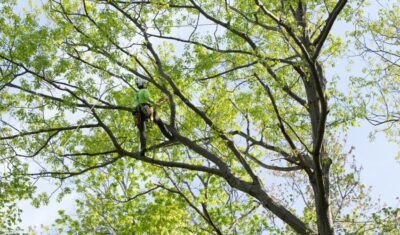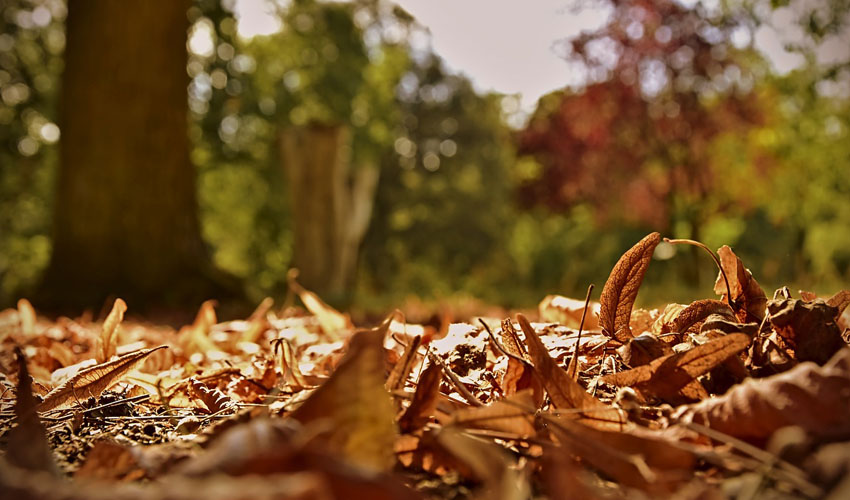
Each autumn, deciduous trees shed their leaves. After a summer of providing shade, fresh air, and wildlife habitat, cooler temperatures and fewer hours of sunlight signal trees that winter dormancy is coming. First, you get the show of colors: red, orange, gold—all made more stunning against a blue fall sky. Afterward, however, you’re left with crispy, brown leaves all over the ground.
What’s the best way to deal with all those fallen leaves?
Avoid Sending Fallen Leaves to the Landfill
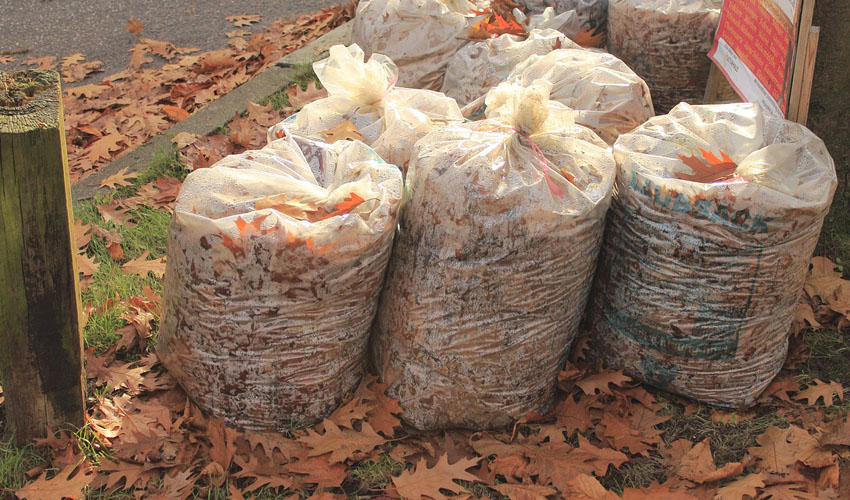
You may be used to bagging up your leaves for the landfill, but you might want to think again about throwing away this valuable resource
Sending dead leaves to a landfill may be your first inclination, but it has drawbacks.
Dead or alive, leaves feed your trees. But when they’re in a landfill, they can’t do that.
Leaves represent energy. While they are green and on a tree, they are making food for the tree through photosynthesis. When fallen leaves start to decay, they transform into another energy source, one that is absorbed by the soil and made available to trees through their roots.
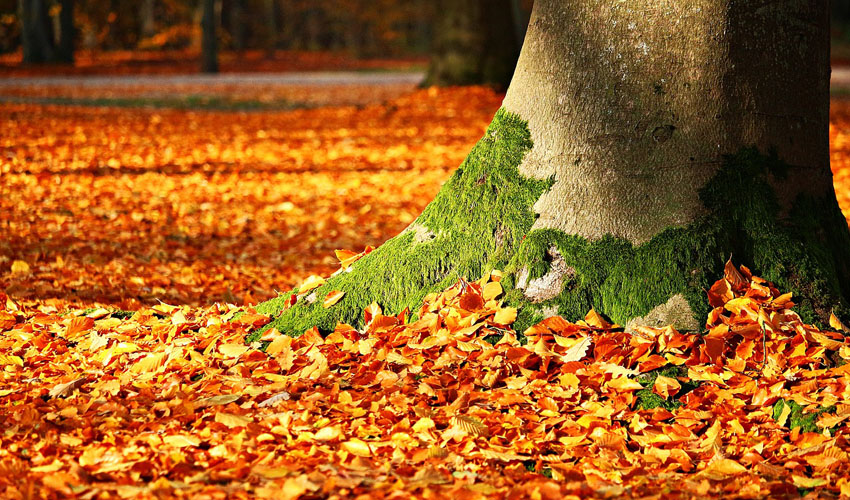
Leaves provide nutrients to trees even after they fall to the ground
When leaves are sent to a landfill, the energy produced by this decay is wasted. Instead of being used to improve soil and tree health, organic matter in landfills produces methane, a greenhouse gas. This harmful gas collects below the surface in landfills and is released into the air as landfill piles are bulldozed to make room for more waste.
Plus, the mix of waste materials found in landfills means that there is no useful way to use the accumulation of dumped items (including your autumn leaves).
What Should You Do With Fallen Leaves Instead?
Rather than sending leaves to the landfill, consider the following options:
- Composting leaves
- Making leaf mold
- Spreading chopped leaves as leaf mulch
- Municipal leaf pickup (if it’s turned into compost or leaf mold)
Why Compost Your Leaves?
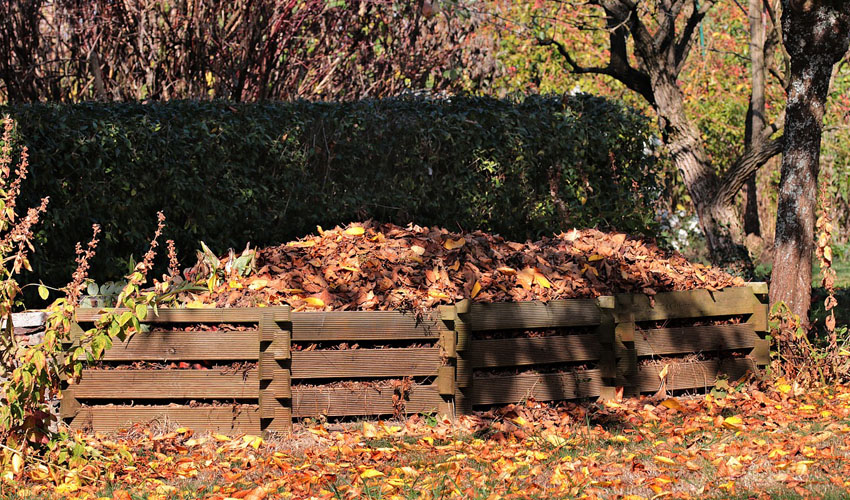
Add fall leaves to your compost pile
Dark, crumbly compost has no odor of decay and, once added to soil, will disintegrate further and become humus or humic acid. This final product is water-soluble and is taken up by tree roots and used as energy by the tree. In nature, this cycle is repeated each year, and it’s how topsoil was originally made!
Fallen leaves are an excellent addition to established compost piles or bins. They can also be composted on their own.
If you don’t already compost at home, check with your city or county to see if you can purchase a low-cost compost bin. For example, Geauga County offers compost bins to county residents for only $35 (retail price is $94). You can also make your own simple compost pile (without a bin) to break down your green waste.
Naturally occurring microorganisms in a compost pile can make quick work of turning leaves and green waste into usable compost. An active compost pile will be warm in its center as the decaying materials generate energy. And remember: a working compost pile does not smell like decaying garbage!
The Federal EPA provides information on how to compost and links to resources about composting here.
What’s the Difference between Compost and Leaf Mold?
Leaf mold and compost are both the result of decayed green waste. The difference between them is that compost incorporates all green waste (including grass clippings, kitchen scraps, dead leaves, and much more), while leaf mold is made only from leaves.
Leaf mold can be easily made by simply placing fallen leaves in a large pile, sprinkling it with water, and then letting it sit until next spring. The leaves will decompose over the winter (if they don’t freeze) and early spring. You can also surround the pile with chicken wire, a burlap fence or place it in a breathable container like the Compost Sak to prevent leaves from blowing around.
Using Leaf Mulch
Leaf mulch is simply chopped up leaves. You can make it very easily; just run your lawnmower over fallen leaves on the lawn and collect the pieces, or place leaves in a trash can and chop them up with a string trimmer (wear eye protection!).
Once leaves are chopped, spread them over your garden beds to act as a mulch. You can also work them loosely into the top few inches of soil.
Curbside Leaf Pickup
Depending on where you live, you may be faced with a huge quantity of leaves each fall. If you don’t have room to compost them yourself or to make a leaf mold pile, what should you do?
Many cities and towns across northeast Ohio compost green waste to make mulch and compost for public landscapes and residents. And most of those municipalities offer curbside leaf pickup.
If your town offers curbside leaf vacuuming, you can rake your leaves to the curb for removal. Be careful not to obstruct the road or sidewalk and make sure the leaf piles are free of other debris such as grass, twigs or branches.
Below are links to curbside leaf collection details in a few nearby villages, towns or cities. The collection days and timeframe may change so check the websites for this year’s dates.
- Shaker Heights – October 15 to December 15
- Chagrin Falls – mid-October through the end of November
- Chardon – fall through December 1
- Beachwood – mid-September through mid-December
Other locations pick up leaves in dedicated yard waste cans or bags. If you place yard waste cans out for pickup and your garden produces more leaves than can fit in the can, fill additional paper green-waste bags and leave them alongside your cart for pickup.
The paper green waste bags are incorporated into compost, as the paper quickly breaks down and decays. Do not use plastic bags to hold leaves—plastic cannot go into compost piles, and your green waste will be sent to landfill, where it will be of no use.
What About Fallen Twigs & Branches?
If you have small twigs and branches that can be easily cut into pieces with hand clippers, you can add these to your compost pile, green cart or paper yard waste bags. Small pieces of woody material are better because:
- Large, woody branches take more time to break down naturally
- In composting facilities, large branches are not processed the same way as soft green waste
- These inflexible branches won’t compact the way leaves and other green waste will, and can tear open green waste bags
If larger branches have fallen, or if you have large branches that need pruning, hire a professional to cut up and remove them. If you can’t easily cut branches with hand clippers or loppers, leave them for professionals to cut with a chainsaw or to turn into mulch with a wood chipper. It’s fast, safe, and insured.
In Summary
However you incorporate compost or leaf mold in your garden, it’s the best and most effective way to improve the health of your soil and your trees.
Keep Your Trees Healthy
Whether or not you are able to use leaves as mulch or compost on your property, your soil needs nutrients to help your trees and plants thrive. Contact us to determine the health of your soil, trees, and plants. We can advise you on ways to improve the health of your Ohio property.Recent Articles
Topics
About The Author

STAY IN THE LOOP
WITH OUR
LATEST UPDATES
"*" indicates required fields

